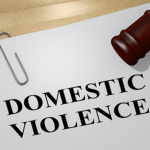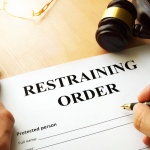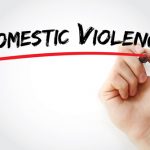Death Count Soars as Epidemic of Violence Against Women Continues

Since the beginning of this month a total of eight women have been killed violently in Australia. In at least seven of the cases, the victims knew the men who murdered them. And yet, no national outcry has occurred, and no politicians have called for action to be taken on this national epidemic.
On 2 October, 46-year-old Gayle Porter was rundown and killed in the Victorian city of Traralgon. Her 53-year-old husband Glen Martin fled the scene, but was later arrested by police and charged with her murder.
The body of 32-year-old Nicole Cartwright was found with her hands bound in a Hunters Hill park on 3 October. No arrests have been made. On the following day, a 29-year-old woman was killed in Palmerston and a man was charged with her murder and breaching a domestic violence order.
On 5 October, 39-year-old Kristie Powell was found dead in her Bellambi home in NSW. A 29-year-old ex-employee was later charged with her murder. And on the following day, Dannyll Goodsell’s body was found in her Ballarat home. Her partner has been arrested for allegedly killing her.
Jacqueline Lynn Francis, a 50-year-old Perth social worker, was stabbed in the neck on 7 October. After seeking help in a café, she was taken to hospital where she later died. Shannon Smith was subsequently charged with one count of murder.
On 11 October, Erana Nahu died of stab wounds in her Glenfield home in Sydney. Her partner James Fredes has been charged with the murder. And on 12 October, a 22-year-old woman was killed in her Mapoon home in Queensland allegedly by a 38-year-old man known to her.
Counting the dead
As Australian governments aren’t paying attention to this epidemic of violence against women, the Counting the Dead Women Australia project researchers at Destroy the Joint are. And they put the tragic tally so far this year at 55 women who’ve been killed violently in this country.
And while this month’s increase in murders – as well as another spike mid-year – occurred, Destroy the Joint spokesperson Jenna Price makes clear that this year’s death rate is no anomaly.
The unfortunate truth is the amount of deaths caused by violence against women has remained consistent over recent years.
“We started in 2014, but researched 2012 and 2013 retrospectively. Since 2012, we have counted 492 dead women and many more missing,” Ms Price told Sydney Criminal Lawyers®. “Our worst year was 2014 – but there is no point comparing one year to another.”
The Counting the Dead Women register shows that in 2014, 84 women were killed violently in Australia, while last year, 53 were, which is a figure that has already been surpassed this year. Since 2012, there are also another 58 missing women – suspected to have been murdered – on the list.
“The fact that women still die violently shows Australia has a significant problem,” Ms Price stressed. “But, Australian governments refuse to be proactive.”
A matter of priorities
The recent food contamination scare in this country saw 100 incidents of strawberries containing needles being reported to authorities across the nation. And 100 Queensland police officers were tasked with solving the contaminated strawberry crisis.
The scandal led prime minister Scott Morrison to announce that new laws will be introduced, which will include new maximum penalties of up to 10 to 15 years in gaol for contaminating food. Although, no one was killed or injured during this scare.
However, no politicians have spoken out about taking greater action on violence against women following the deaths of the eight victims this month. And this is when statistics show that, on average, one woman is killed every week by either a current or former partner in this country.
The Turnbull government announced its Third Action Plan to Reduce Violence Against Women and Their Children in October 2016. It comprised of a $100 million dollar package designed to change attitudes to and tolerance for violence against women.
But, Domestic Violence NSW chief executive Moo Baulch has stated that this package was inadequate. And she’s also described the lack of action by Australian governments in regard to violence against women as staggering.
While at the state level, the Baird government launched the Going Home and Staying Home program in 2014. The impact of this being that a large number of NSW women’s refuges and speciality services have been closed, which has left women fleeing domestic violence with nowhere to go.
The terror within
“This is an epidemic and needs a whole-of-society response,” explained Ms Price, who’s also an academic at Sydney’s University of Technology. “Our count draws attention to the horror of femicide. But violence against women happens because of inequality.”
According to Ms Price, “we need a major overhaul of the structural drivers of inequality.” And this is something that won’t happened until government takes violence against women as seriously as it takes the threat of terrorism.
And this is the clincher. The amount of energy and money that successive federal and state governments have invested into counterterrorism measures over the last two decades is immense. Since 9/11, over 70 pieces of counterterrorism legislation have been passed at the federal level.
But, the Global Terrorism Database puts the number of people who’ve been killed as a result of a terrorist incident on Australian soil since 2014 at 10. And that’s compared with the 492 women the Destroy the Joint’s project has recorded since 2012.
A necessary watch
The count “provides a focus on fatal violence against women. It’s the whole terrible number, rather than just dozens of individual cases,” Ms Price said. And that’s the thing, the attention given to so-called terrorist incidents in Australia is far greater than incidents of deadly violence against women.
Indeed, these incidents are sadly commonplace in our society. One in three Australian women have experienced physical violence since the age of 15, while one in five has experienced sexual violence. And the various Australian police forces are called out to 5,000 domestic violence incidents a week.
“We’ve lost nearly 500 women since our count began. And Australians care. But, not enough to force state and federal governments to do better,” Ms Price concluded. “We hope that day will come soon, before another 500 women die.”







